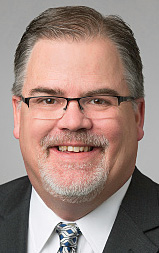/ Featured Blogs
Want to Help Ensure the Internet Remains Open? Internet Society Seeks Nominations for 2025 Board of Trustees
 Do you (or someone you know) believe that people everywhere should have access to affordable, reliable, and resilient Internet connectivity? Are you passionate about ensuring that people everywhere have an Internet experience that is safe, secure, and protects them online? Do you have leadership experience in business, government, philanthropy, and/or the nonprofit sector?
Do you (or someone you know) believe that people everywhere should have access to affordable, reliable, and resilient Internet connectivity? Are you passionate about ensuring that people everywhere have an Internet experience that is safe, secure, and protects them online? Do you have leadership experience in business, government, philanthropy, and/or the nonprofit sector?
- By Dan York
- Comments: 0
- Views: 2,281
Attacking DNS Abuse: The Next Amendments Needed
 Abusive behavior that leverages the domain name system (DNS) continues to be a problem, with a reach that has been widely and credibly documented. There is little doubt that bad actors continue to use the DNS for nefarious and costly purposes. While the amendments made in 2024 to ICANN's Registry Agreement (RA) and Registrar Accreditation Agreement (RAA) were a step in the right direction, more advanced tools are needed to bring abuse rates down.
Abusive behavior that leverages the domain name system (DNS) continues to be a problem, with a reach that has been widely and credibly documented. There is little doubt that bad actors continue to use the DNS for nefarious and costly purposes. While the amendments made in 2024 to ICANN's Registry Agreement (RA) and Registrar Accreditation Agreement (RAA) were a step in the right direction, more advanced tools are needed to bring abuse rates down.
- By Mason Cole
- Comments: 2
- Views: 3,936
How Dormant Domains Can Be Weaponized During Events Like the 2024 U.S. Election
 As with any high-stakes event, elections have become a prime target for cybercriminals seeking to exploit public trust through impersonation, misinformation, and scams. CSC's comprehensive research about the 2024 U.S. Election reveals the alarming role of dormant domains, which have the potential to be exploited for launching cyber attacks against political campaigns, organizations, and constituents.
As with any high-stakes event, elections have become a prime target for cybercriminals seeking to exploit public trust through impersonation, misinformation, and scams. CSC's comprehensive research about the 2024 U.S. Election reveals the alarming role of dormant domains, which have the potential to be exploited for launching cyber attacks against political campaigns, organizations, and constituents.
- By Ihab Shraim
- Comments: 0
- Views: 4,577
DNS: The Proven, Eco-Friendly Alternative to Blockchain and NFTs
 As the world races towards digital transformation, the technologies we choose will have a lasting impact on our planet. Blockchain, NFTs, and other crypto assets have garnered much attention for their ability to securely and immutably store records. However, the environmental cost of maintaining these technologies is often overlooked. The energy consumption required to sustain blockchains, particularly those using Proof of Work (PoW), is enormous...
As the world races towards digital transformation, the technologies we choose will have a lasting impact on our planet. Blockchain, NFTs, and other crypto assets have garnered much attention for their ability to securely and immutably store records. However, the environmental cost of maintaining these technologies is often overlooked. The energy consumption required to sustain blockchains, particularly those using Proof of Work (PoW), is enormous...
- By Ulvi Kasimov
- Comments: 0
- Views: 2,967
NIS2 Article 28 Guidance: A Positive Step Toward Reducing DNS Abuse Across Europe
 The European Union (EU) has set a high bar by tackling domain name system (DNS) abuse head on via government regulation and seems to have successfully resisted attempts to water down DNS stewardship obligations. Recent guidance from a key European Commission cooperation group (the NIS Cooperation Group) handling sections of the Network and Information Security Directive (NIS2) intends for a robust implementation of Article 28, which will go a long way toward helping to mitigate some of the longstanding problems that persist in the DNS.
The European Union (EU) has set a high bar by tackling domain name system (DNS) abuse head on via government regulation and seems to have successfully resisted attempts to water down DNS stewardship obligations. Recent guidance from a key European Commission cooperation group (the NIS Cooperation Group) handling sections of the Network and Information Security Directive (NIS2) intends for a robust implementation of Article 28, which will go a long way toward helping to mitigate some of the longstanding problems that persist in the DNS.
- By David Hughes
- Comments: 2
- Views: 5,765
UN’s Global Digital Compact: A Fork in the Road for Internet Governance?
 As the United Nations' Global Digital Compact (GDC) approaches its expected adoption, a growing chorus of critics warns that it threatens the very foundations of multistakeholderism in Internet governance. While the GDC aims to foster global cooperation and advance shared objectives for digital transformation, it not only centralizes power within the UN but also sidelines the Internet Governance Forum (IGF) - a platform that has, for years, been instrumental in amplifying diverse voices, especially from marginalized communities and the private sector.
As the United Nations' Global Digital Compact (GDC) approaches its expected adoption, a growing chorus of critics warns that it threatens the very foundations of multistakeholderism in Internet governance. While the GDC aims to foster global cooperation and advance shared objectives for digital transformation, it not only centralizes power within the UN but also sidelines the Internet Governance Forum (IGF) - a platform that has, for years, been instrumental in amplifying diverse voices, especially from marginalized communities and the private sector.
- By Imad Payande
- Comments: 0
- Views: 4,586
Verisign and ICANN Renew Root Zone Maintainer Service Agreement
 On October 20th, ICANN and Verisign renewed the agreement under which Verisign will continue to act as Root Zone Maintainer for the Domain Name System (DNS) for another 8-year term. The Root Zone sits atop the hierarchical architecture of the DNS and is essential to virtually all internet navigation, acting as the dynamic, cryptographically secure, global directory of all top-level domains that exist in the DNS.
On October 20th, ICANN and Verisign renewed the agreement under which Verisign will continue to act as Root Zone Maintainer for the Domain Name System (DNS) for another 8-year term. The Root Zone sits atop the hierarchical architecture of the DNS and is essential to virtually all internet navigation, acting as the dynamic, cryptographically secure, global directory of all top-level domains that exist in the DNS.
- By Pat Kane
- Comments: 0
- Views: 4,936
Why Satellite Cellular Won’t Replace Traditional Cell Networks Anytime Soon
 There was a burst of recent press about cellular service provided from satellites. This was probably prompted by the two recent hurricanes that have disabled terrestrial cellular and broadband networks in the southeast. I've seen speculation and discussion on Reddit and other forums where people have been wondering if satellite is the future of cell service and if the ubiquitous giant cell towers will eventually become obsolete.
There was a burst of recent press about cellular service provided from satellites. This was probably prompted by the two recent hurricanes that have disabled terrestrial cellular and broadband networks in the southeast. I've seen speculation and discussion on Reddit and other forums where people have been wondering if satellite is the future of cell service and if the ubiquitous giant cell towers will eventually become obsolete.
- By Doug Dawson
- Comments: 0
- Views: 6,211
Further Ideas in Mark Similarity Measurement
 In the final three articles in my series looking at algorithms for measuring the similarity of marks, I extend the ideas to provide a more sophisticated and adaptable framework. Article 4 introduces a similarity score based on color distance in RGB space, offering a quantitative approach to trademark similarity. Article 5 refines word mark similarity by using the International Phonetic Alphabet to improve phonetic analysis. The final article presents a method for sorting colors by dominant shade, aiding in trademark review and potential guidelines for color mark protection.
In the final three articles in my series looking at algorithms for measuring the similarity of marks, I extend the ideas to provide a more sophisticated and adaptable framework. Article 4 introduces a similarity score based on color distance in RGB space, offering a quantitative approach to trademark similarity. Article 5 refines word mark similarity by using the International Phonetic Alphabet to improve phonetic analysis. The final article presents a method for sorting colors by dominant shade, aiding in trademark review and potential guidelines for color mark protection.
- By David Barnett
- Comments: 0
- Views: 4,847
Dedicated IP VPN: Complete Guide, Benefits, Setup & More
What is a Dedicated IP VPN? A Dedicated IP VPN is a Virtual Private Network (VPN) service that provides users with a unique, static IP address assigned exclusively to them. Unlike a shared IP address, which is used by multiple users simultaneously, a dedicated IP is reserved for a single user, offering greater control and security over their online activities.
- By CircleID Editorial
- Comments: 0
- Views: 3,722